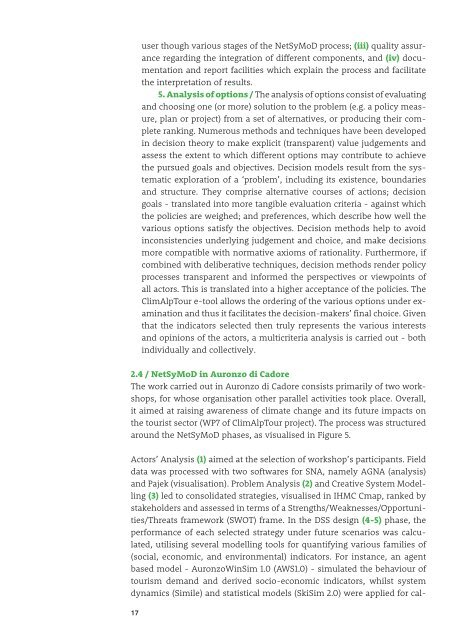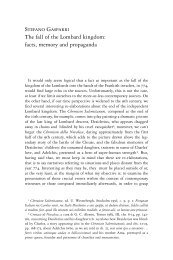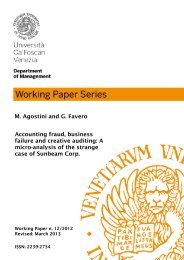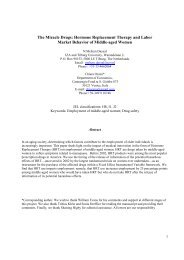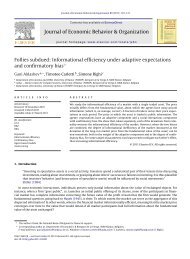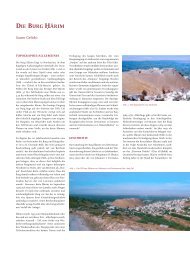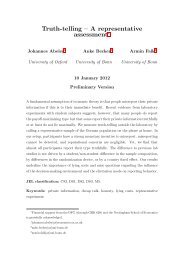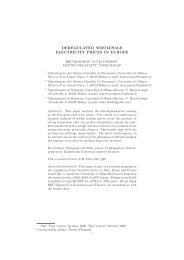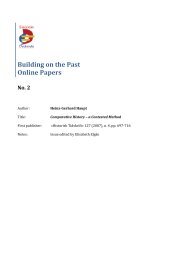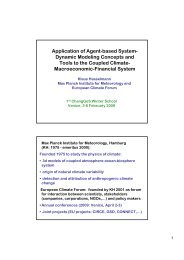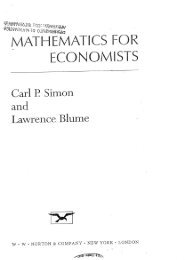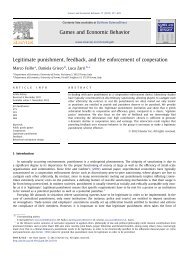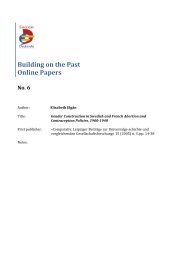The pilot area of Auronzo di Cadore (Belluno) - Università Ca
The pilot area of Auronzo di Cadore (Belluno) - Università Ca
The pilot area of Auronzo di Cadore (Belluno) - Università Ca
Create successful ePaper yourself
Turn your PDF publications into a flip-book with our unique Google optimized e-Paper software.
17<br />
user though various stages <strong>of</strong> the NetSyMoD process; (iii) quality assurance<br />
regar<strong>di</strong>ng the integration <strong>of</strong> <strong>di</strong>fferent components, and (iv) documentation<br />
and report facilities which explain the process and facilitate<br />
the interpretation <strong>of</strong> results.<br />
5. Analysis <strong>of</strong> options / <strong>The</strong> analysis <strong>of</strong> options consist <strong>of</strong> evaluating<br />
and choosing one (or more) solution to the problem (e.g. a policy measure,<br />
plan or project) from a set <strong>of</strong> alternatives, or producing their complete<br />
ranking. Numerous methods and techniques have been developed<br />
in decision theory to make explicit (transparent) value judgements and<br />
assess the extent to which <strong>di</strong>fferent options may contribute to achieve<br />
the pursued goals and objectives. Decision models result from the systematic<br />
exploration <strong>of</strong> a ‘problem’, inclu<strong>di</strong>ng its existence, boundaries<br />
and structure. <strong>The</strong>y comprise alternative courses <strong>of</strong> actions; decision<br />
goals - translated into more tangible evaluation criteria - against which<br />
the policies are weighed; and preferences, which describe how well the<br />
various options satisfy the objectives. Decision methods help to avoid<br />
inconsistencies underlying judgement and choice, and make decisions<br />
more compatible with normative axioms <strong>of</strong> rationality. Furthermore, if<br />
combined with deliberative techniques, decision methods render policy<br />
processes transparent and informed the perspectives or viewpoints <strong>of</strong><br />
all actors. This is translated into a higher acceptance <strong>of</strong> the policies. <strong>The</strong><br />
ClimAlpTour e-tool allows the ordering <strong>of</strong> the various options under examination<br />
and thus it facilitates the decision-makers’ final choice. Given<br />
that the in<strong>di</strong>cators selected then truly represents the various interests<br />
and opinions <strong>of</strong> the actors, a multicriteria analysis is carried out - both<br />
in<strong>di</strong>vidually and collectively.<br />
2.4 / NetSyMoD in <strong>Auronzo</strong> <strong>di</strong> <strong><strong>Ca</strong>dore</strong><br />
<strong>The</strong> work carried out in <strong>Auronzo</strong> <strong>di</strong> <strong><strong>Ca</strong>dore</strong> consists primarily <strong>of</strong> two workshops,<br />
for whose organisation other parallel activities took place. Overall,<br />
it aimed at raising awareness <strong>of</strong> climate change and its future impacts on<br />
the tourist sector (WP7 <strong>of</strong> ClimAlpTour project). <strong>The</strong> process was structured<br />
around the NetSyMoD phases, as visualised in Figure 5.<br />
Actors’ Analysis (1) aimed at the selection <strong>of</strong> workshop’s participants. Field<br />
data was processed with two s<strong>of</strong>twares for SNA, namely AGNA (analysis)<br />
and Pajek (visualisation). Problem Analysis (2) and Creative System Modelling<br />
(3) led to consolidated strategies, visualised in IHMC Cmap, ranked by<br />
stakeholders and assessed in terms <strong>of</strong> a Strengths/Weaknesses/Opportunities/Threats<br />
framework (SWOT) frame. In the DSS design (4-5) phase, the<br />
performance <strong>of</strong> each selected strategy under future scenarios was calculated,<br />
utilising several modelling tools for quantifying various families <strong>of</strong><br />
(social, economic, and environmental) in<strong>di</strong>cators. For instance, an agent<br />
based model - <strong>Auronzo</strong>WinSim 1.0 (AWS1.0) - simulated the behaviour <strong>of</strong><br />
tourism demand and derived socio-economic in<strong>di</strong>cators, whilst system<br />
dynamics (Simile) and statistical models (SkiSim 2.0) were applied for cal-


